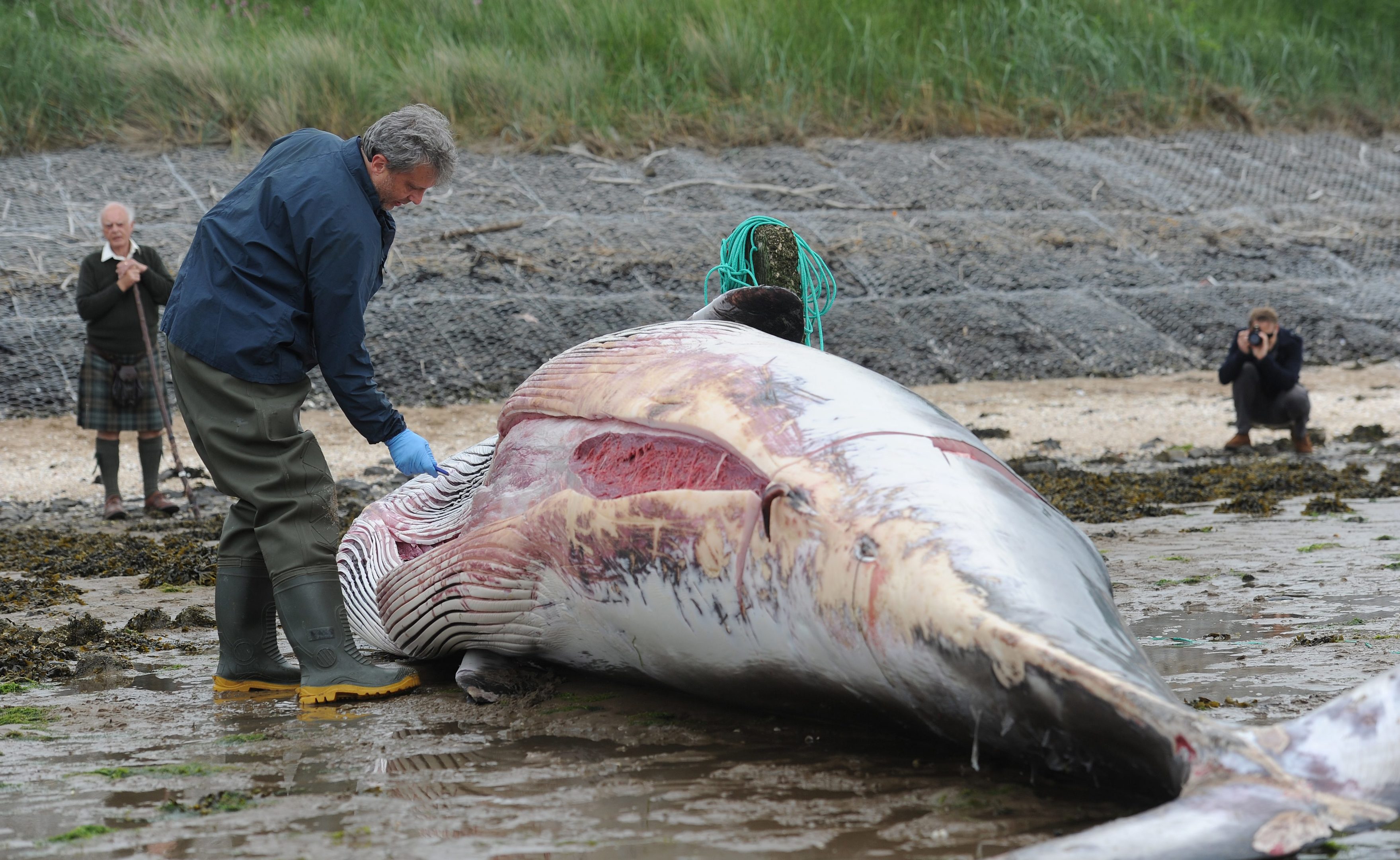A dead whale which washed up on a St Andrews beach this week did drown after being caught up in fishing gear, tests have confirmed.
The carcass of the minke whale was spotted on the West Sands near the River Eden on Wednesday evening, and attracted a great deal of interest in and around the town.
A specialist team from the Scottish Marine Animal Strandings Scheme travelled down from Inverness on Thursday and carried out a necropsy during low tide to find out how the mammal died.
A spokesperson from the SMASS said the sub-adult whale, which measured 6.35 metres in length, showed clear indications of “recent, acute entanglement”.
“With the assistance of staff and students from the Sea Mammal Research Unit (SMRU) we were able to conduct a pretty comprehensive necropsy on the beach during low tide,” the spokesperson added.
“There were very characteristic abrasions on the tailstock with evidence of bruising and fluid aspirated into the lungs; all consistent with the animal becoming caught in rope and, being unable to surface and breath, rapidly drowning.
“This is the third cetacean entanglement case this year and looking back over the past 20 years, entanglement is the single most common cause of death diagnosed in minke whales, accounting for over 32% of mortalities in this species and most frequently in creel lines.
“Large whale entanglement is a worldwide problem, and aside from being a welfare issue, can, in some species, also pose a significant risk to conservation.
“By examining cases such as this, we are however able to better understand how and where these animals become entangled, hopefully leading to better mitigation in future.
“For this reason we are particularly grateful to all those who took and sent us detailed photographs of the suspected rope marks when the animal was first discovered.”
The SMASS added that the animal otherwise appeared healthy, although that will be confirmed with additional testing.
Dr Andrew Brownlow, a pathologist with the SMASS, had previously said he had feared that creel ropes may have been to blame, adding that local fishermen had spotted something floating in the sea off the Fife coast with material attached to it.
